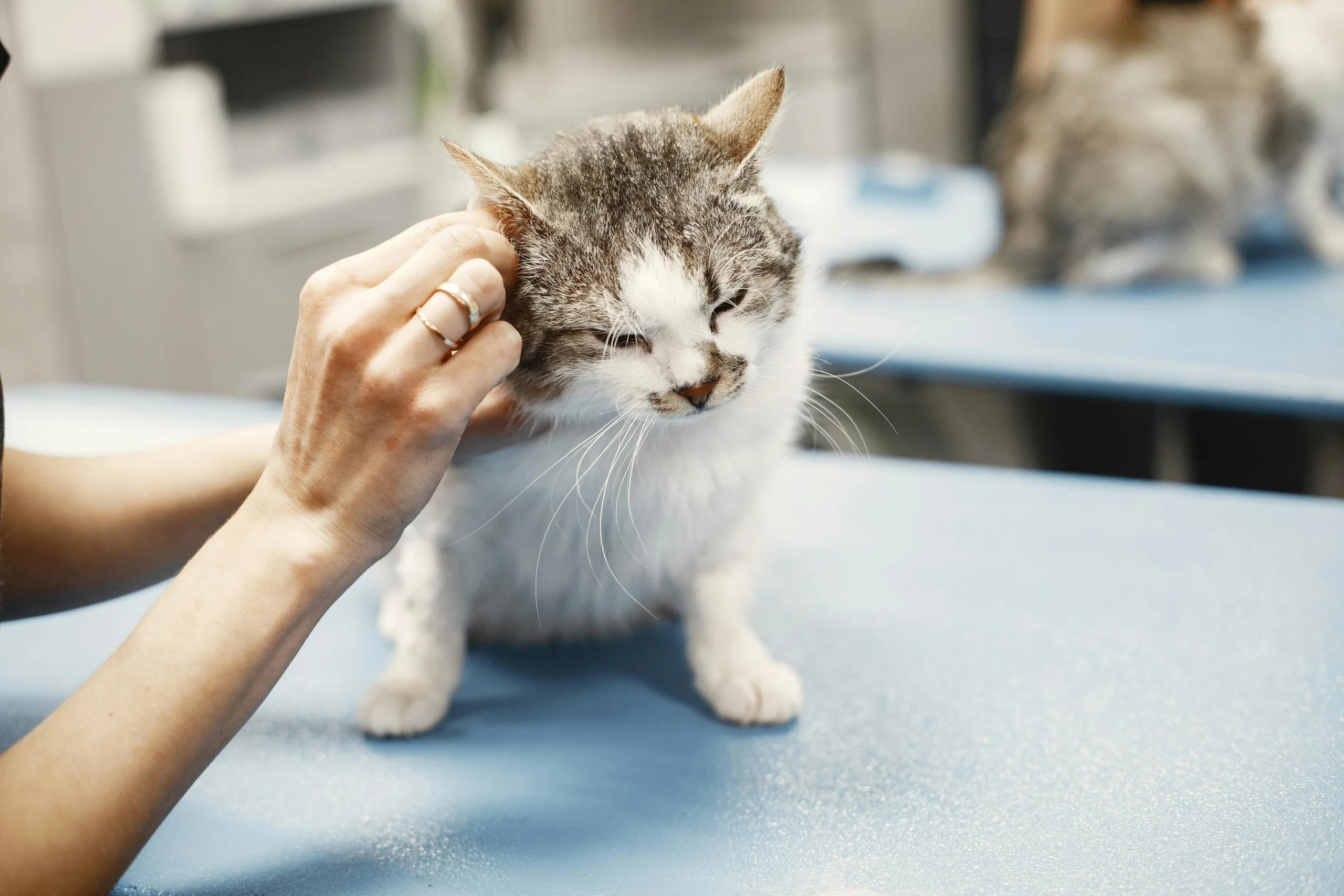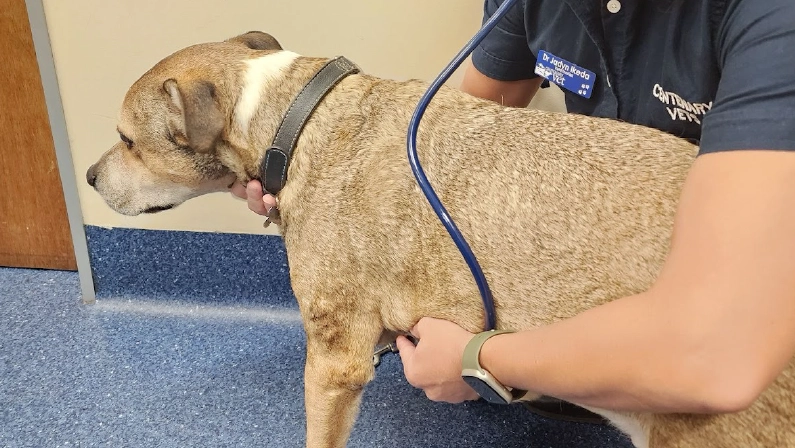If your cat is suddenly visiting the litter box more often, straining to urinate, or acting out of sorts, it could be a sign of something more serious than stress or a dirty tray.
Urinary problems in cats are a common concern, and in many cases, Feline Lower Urinary Tract Disease (FLUTD) is the underlying cause. FLUTD is a group of conditions that affect your cat’s urinary system, causing pain or serious blockages.
In this blog, you’ll learn about the causes, symptoms, and treatment options. You’ll also see how regular pet health checks can help catch issues before they become emergencies.
With insights from experienced veterinarians, we’ll guide you through what to watch for and how to help your cat recover.
Let’s take a closer look at what every cat owner should know about bladder stones, urinary crystals, and how to keep their feline friend healthy and comfortable.
What Causes Feline Lower Urinary Tract Disease (FLUTD)?
Domestic cats are descended from wild cats that lived in the arid regions of North Africa and the Middle East, where they adapted to get most of their water from prey.
Today, many cats eat commercially prepared diets with less moisture, and some do not drink enough to make up for it. This often leads to chronic dehydration.
This lack of hydration is one of several factors linked to urinary problems in cats, including Feline Lower Urinary Tract Disease (FLUTD). In up to half of all FLUTD cases, the exact cause remains unknown.
However, several risk factors are known to increase the likelihood of urinary issues.
Stress
Events such as moving house or introducing a new baby or pet can trigger FLUTD in susceptible cats.
Diet
The balance of minerals, urine pH, and water intake all influence the risk of FLUTD.
Infection
Bacterial infections can cause swelling and inflammation of the bladder and urinary tract, potentially leading to stones or crystals. Conditions like diabetes and certain viral infections can make cats more prone to these infections.
Obesity
Overweight and inactive cats are more likely to develop FLUTD, possibly due to their reluctance to urinate frequently.
Urine Retention
Cats that hold their urine for long periods may have a higher risk of developing bladder stones.
Anatomical Abnormalities or Tumors
These can make it difficult for some cats to pass urine normally.
What Causes Feline Lower Urinary Tract Disease (FLUTD)?
Feline Lower Urinary Tract Disease (FLUTD) refers to a group of conditions that affect a cat’s bladder and urethra.
Common signs include straining to urinate, frequent litter box visits, and blood in the urine. Here are the main causes:
1. Feline Idiopathic Cystitis (FIC)
The most common cause of FLUTD. Often triggered by stress, FIC leads to bladder inflammation without infection or stones.
2. Urinary Crystals and Bladder Stones
Crystals or stones can irritate the bladder or block the urethra. Diet and low water intake are common contributors.
3. Urinary Tract Infections (UTIs)
Less common but still possible, especially in older cats. A UTI involves bacterial infection and usually needs antibiotics.
4. Urethral Obstruction
Mainly in male cats, a blockage can be life-threatening. Signs include straining, no urine output, and lethargy.
5. Obesity and Inactivity
Overweight cats are more prone to FLUTD. Inactivity reduces water intake and urination frequency, increasing risk.
6. Dehydration and Diet
Dry food diets and low water consumption lead to concentrated urine, which can irritate the bladder and cause crystals.
7. Anatomical Issues or Injury
Less common, but structural abnormalities or trauma can cause recurring urinary problems.
Will My Cat Get FLUTD?
Neutered male cats are most at risk of developing urethral blockages, according to Chiang Mai University Veterinary Teaching Hospital, but urinary issues in cats can affect females and un-neutered males too.
Because male cats have longer and narrower urethras, they’re more likely to develop blockages caused by inflammation or stones.
FLUTD is most common in cats between two and six years old. As cats get older, the risk of developing urinary issues tends to decrease.
How Do I Know If My Cat Has FLUTD?
Cats with FLUTD or bladder stones may show a range of symptoms, including:
- Frequent urination
- Blood in the urine
- Producing only small amounts of urine
- Urinating outside the litter tray
- Recurring urinary tract infections
- Straining to urinate (spending more time in the litter tray)
If your cat’s urethra becomes completely blocked, the pressure in the bladder can increase, causing it to burst.
Alternatively, kidney failure may occur, leading to a buildup of toxins in the blood. Signs of a urinary blockage include:
- Straining to urinate
- Inability to urinate
- Crying in the litterbox
- Vomiting
- Anorexia
- Painful abdomen
- Lethargy
Cats with kidney stones may show no symptoms, or they may have persistent blood in the urine.
If the kidneys are affected, your cat may experience pain near the spine (where the kidneys are located) or may drink and urinate more frequently.
How Can We Be Sure It’s FLUTD?
FLUTD discomfort is often mistaken for constipation.
If your cat is straining to urinate, visiting the litter tray frequently, or passing only small amounts of urine, these may be signs of a urinary issue.
You might also notice blood in the urine or your cat urinating outside the litter box.
If you suspect FLUTD, consult your veterinarian promptly.
Blood tests can check for kidney damage, and imaging such as x-rays or ultrasound may help identify blockages.
For more support, you can visit a local veterinary clinic that offers diagnostic care and ongoing treatment options.
What Can Be Done to Treat FLUTD?
A complete urethral blockage is a medical emergency. Your veterinarian will need to act quickly, as delays can be life-threatening.
At first, your cat may seem only mildly unwell and shows signs like vomiting or lethargy.
Without treatment, their condition can worsen quickly, and in severe cases, they may fall into a coma within 48 hours.
To relieve the blockage, your cat will be sedated and a catheter inserted to drain the bladder.
This helps release the pressure and stabilise their condition. If bladder stones are present, surgical removal may be necessary.
Milder cases of urinary problems in cats may be managed with pain relief, anti-inflammatory medication, or antibiotics if infection is involved.
Never give your cat human medications, as many are toxic to pets. Always follow your vet’s instructions closely.
How Can I Prevent the FLUTD from Returning?
Encouraging your cat to drink more water and adjusting their diet are key to managing and preventing FLUTD.
Provide fresh water at all times. Feed moist food, and consider adding water to meals or using a fountain to increase intake.
Prescription diets from your vet can reduce the risk of crystals and stones. These should be fed exclusively.
Some cats may also need daily medication to maintain proper urine acidity.
Keep litter trays clean to prevent cats from holding in urine.
If you have multiple cats, give the affected one a separate tray to track their urination and spot any issues early.
Stress is another significant factor in FLUTD development. Prescription diets with supplements to reduce anxiety are available, and other supplements or medications may be beneficial if your cat is particularly anxious.
Centenary Vets can recommend the best treatment for your cat.
What Ongoing Monitoring Is Needed for FLUTD?
Frequent urine monitoring is essential, especially in the early stages after a diagnosis of FLUTD or bladder stones.
If your cat had surgery to remove stones or unblock the urethra, they’ll need follow-up visits in the first few weeks to check recovery.
A urine test should be done within 1 to 2 weeks to confirm improvement. Follow-ups at one and three months help monitor for recurrence.
Your vet may also repeat x-rays or ultrasound to check for new stones or blockages. These checks ensure treatment is working and allow early intervention if needed.
If your cat is doing well after the first few months, less frequent monitoring may be needed.
However, 6-monthly consultations with your veterinarian are essential to continue dispensing medications, prescribing diets, and closely monitoring your pet.
Generally, ongoing monitoring will include:
- Repeat urinalysis (urine tests) + urine culture (if needed): every 6 months
- General blood tests: every 6-12 months (to monitor organ function), more frequently if your cat is on medication or had any kidney issues
- Repeat abdominal ultrasound or x-ray: every 12 months
To help manage these regular check-ups, Centenary Vets offers Commitment 2 Care Plans that provide structured, preventative health support for your pet.



